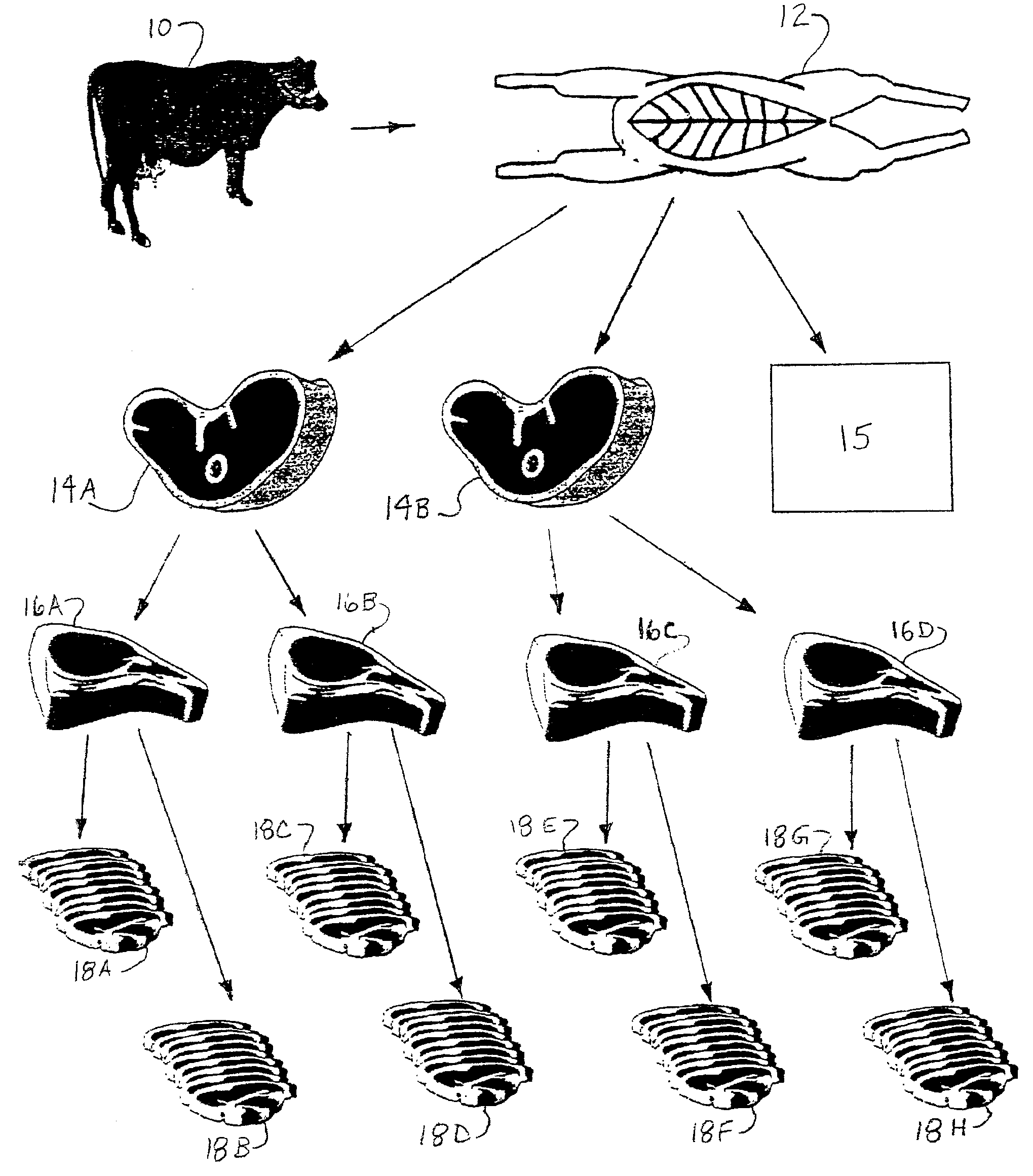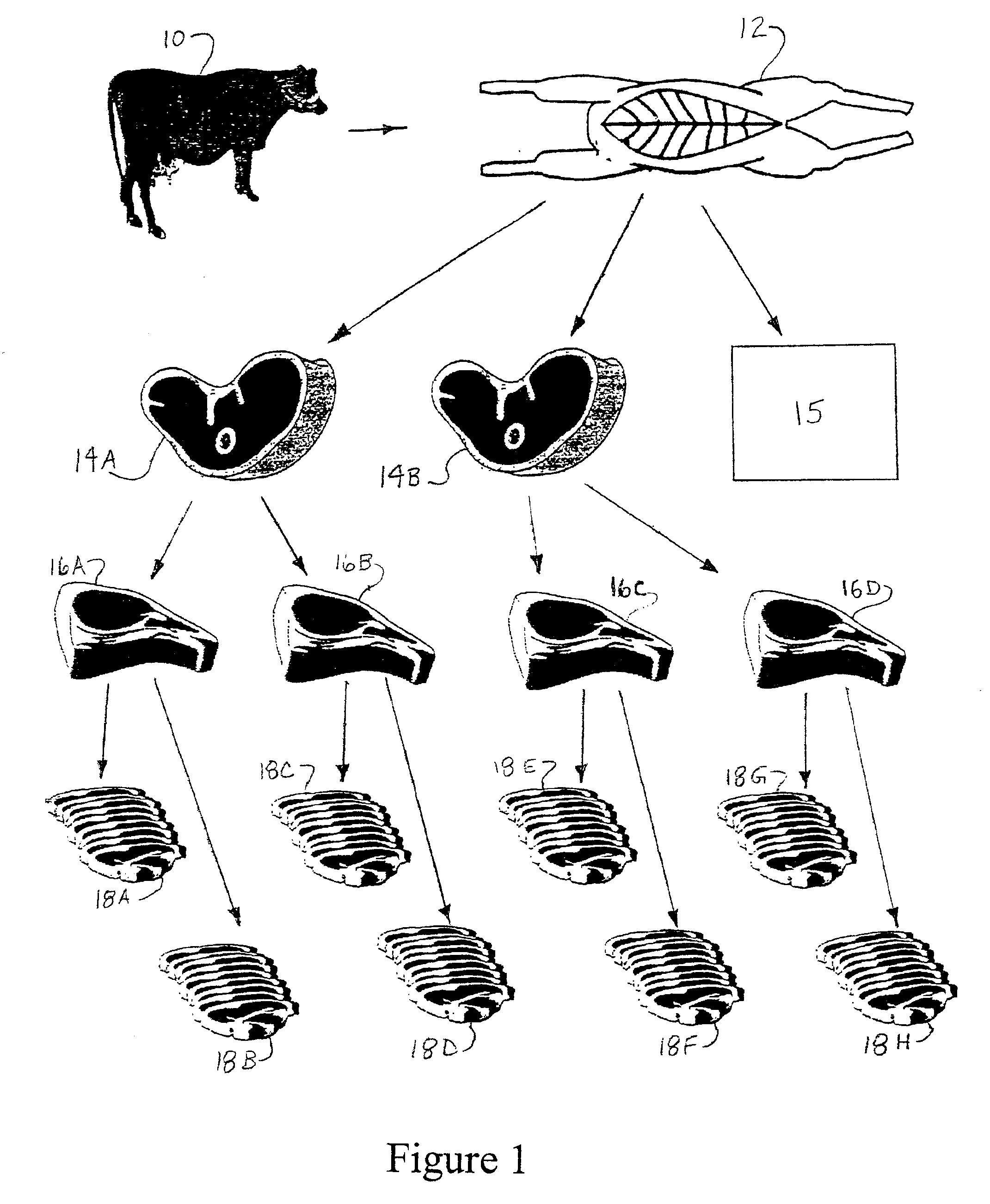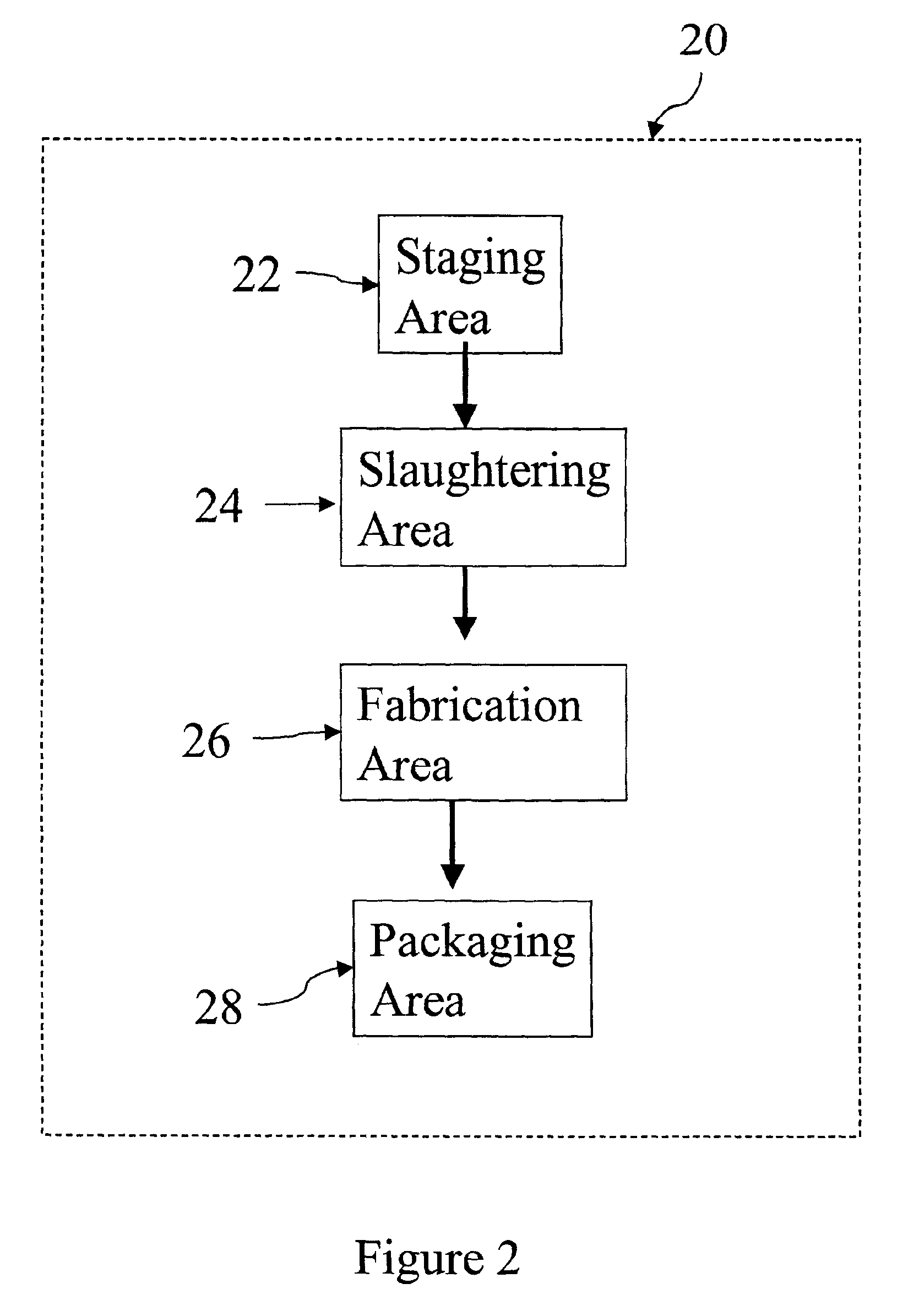Method of linking a food source with a food product
a food source and food technology, applied in the field of linking a food source with a food product, can solve the problems of complex processing operations involved in converting difficulty in identifying actual source units for producers and investigators, and large processing operations, etc., and achieves the task of linking source units to product items that is especially challenging for meat fabricators
- Summary
- Abstract
- Description
- Claims
- Application Information
AI Technical Summary
Benefits of technology
Problems solved by technology
Method used
Image
Examples
Embodiment Construction
A conversion process, such as that utilized by a meat processing facility 20, may include a fabrication area 26 having an entry area 30, an exit area 34, and a meat processing line 32 connecting the entry and exit areas. (FIGS. 2-3.) A conversion algorithm may be created to estimate the conversion time expected for producing a product item from a source unit. The conversion algorithm may be used, for example: to link one or more source units to a product item, to link a source unit to one or more product items, or to link a product item to a plurality of product items (e.g., to conduct a product recall).
Conversion Processes
A conversion process may produce a plurality of product items from a plurality of source units of food. Examples of source units of food include live or dead animals (e.g., cattle, sheep, pigs, chicken), plants (e.g., corn), and partially processed objects such as carcasses, primal cuts, section cuts, and grain. Thus, a source unit may be an object derived from an...
PUM
 Login to View More
Login to View More Abstract
Description
Claims
Application Information
 Login to View More
Login to View More - R&D
- Intellectual Property
- Life Sciences
- Materials
- Tech Scout
- Unparalleled Data Quality
- Higher Quality Content
- 60% Fewer Hallucinations
Browse by: Latest US Patents, China's latest patents, Technical Efficacy Thesaurus, Application Domain, Technology Topic, Popular Technical Reports.
© 2025 PatSnap. All rights reserved.Legal|Privacy policy|Modern Slavery Act Transparency Statement|Sitemap|About US| Contact US: help@patsnap.com



